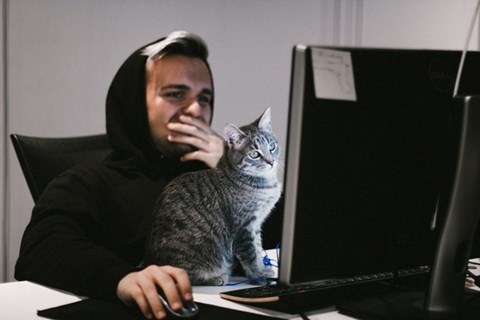How digital tech can help address the COVID-19 mental health crisis
Date: Tuesday 30 Jun 2020
The COVID-19 pandemic is quietly damaging the mental health of everyone across the world. During the coronavirus outbreak, we have been laser-focused on black-and-white statistics such as the death toll to measure the gravity of the outbreak, but what about the grey areas in between? Not only must we deal with the immediate threat to life but we must also ready ourselves for the mental health fallout caused by lockdown measures.

Since mid-March, the Mental Health Foundation has regularly surveyed over 4,000 adults to gauge the impact that the pandemic has had on UK citizens. Its survey results serve as a stark warning of what is to come as it reports higher levels of anxiety, stress, loneliness and hopelessness caused by self-isolation, social distancing and concerns surrounding finances and health. This is also prompting the use of ill-advised coping mechanisms such as overeating and alcohol consumption as well as increased demand for antidepressants, all of which may result in further health issues down the road. Whilst it has not yet been reported, I would also hazard a guess that we may uncover increased levels of paranoia as well due to the Test and Trace programme and the contact tracing app due to be rolled out shortly across the UK.
Whilst the findings are indeed a tough read; there are a few glimmers of hope nestled amongst the chaos. Many felt that they could make a positive contribution in the fight against the coronavirus and support those around them (evidenced by the high number of NHS volunteer registrations), there was an increase in people feeling well informed and prepared, and respondents reported exercise, hobbies and contact with family or friends as key coping mechanisms.
Whereas demand for in-person mental health appointments has decreased, presumably due to the lack of GP referrals resulting from fewer visits, the general public has instead been turning to tech in their droves. Demand for video calling, as a way of bridging the social distancing gap, has prompted the likes of WhatsApp to increase its video call limits.
Over a million apps tagged with ‘mental health’ have also been downloaded since the start of the outbreak. On top of this, there have been developments in areas such as online cognitive behavioural therapy (CBT), chatbots and virtual reality software to improve mental health as society increasingly seems to be coming round to the idea that life inside the Matrix may be a little more palatable.
Logistically, the sector is embracing digital tools to drive administrative efficiencies but it must ensure that, when required, patients have direct and quick access to its most important commodity, clinically trained professionals. Access may come in the form of SMS, email, phone calls or video calls but, given the sensitive topic at hand, patients should, in theory, benefit more from personal interaction.
The mental health sector will always be heavily reliant on “the silent workforce” of friends and family but it will also require a fiscal response such as the £5m recently made available to community projects announced by Mental Health Minister, Nadine Dorries. Despite mental health ICT investment paling in comparison to the levels witnessed in the acute sector, suppliers should by no means sniff at an annual ICT expenditure of around £330m. This advice is even more potent in a scenario such as this, where organisations are being encouraged to be bold in their digital strategies, especially if the Government recognises (and can deliver on) the need for additional funding to deal with the COVID-19 aftermath.

